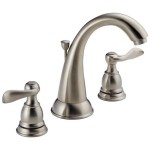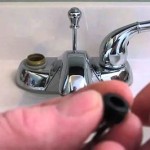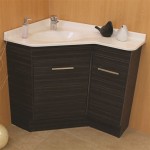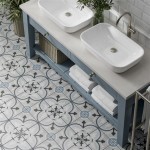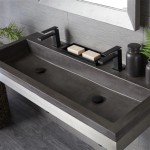Replacing Bathroom Floor Rotted In Kitchen Cabinets: How to Fix
Water damage can be one of the most challenging issues homeowners face. It can manifest in various ways, and one of the most troublesome is rotted floorboards, particularly when it affects kitchen cabinets. This issue is especially common in bathrooms, where moisture and spills are frequent occurrences. The rot can spread from the bathroom floor to the cabinets, leading to instability and structural compromise. Fixing this issue requires a comprehensive approach, involving replacing the damaged flooring, addressing the source of the water damage, and taking appropriate precautions to prevent future rot.
Assessing the Extent of the Damage
The first step in tackling rotted bathroom flooring affecting kitchen cabinets is a thorough assessment. This involves determining the extent of the damage and identifying the source of the water leak. Start by carefully examining the affected area. Look for soft, spongy wood, discoloration, and the presence of mold. If you suspect the damage extends beyond the visible surface, you may need to remove the affected cabinet doors and drawer fronts to inspect the underlying structure.
Once you have a clear understanding of the extent of the rot, investigate the source of the water damage. This may involve checking the plumbing under the bathroom floor, inspecting the shower or bathtub for leaks, or examining the drainage system for blockages. Addressing the source of the leak is crucial to prevent further damage and ensure a long-lasting repair.
Removing and Replacing the Damaged Flooring
After assessing the damage and addressing the water leak, the next step is to remove and replace the rotted floorboards. This process involves cutting out the damaged sections and installing new boards. This can be a challenging task for novice DIYers, as it often involves lifting heavy cabinets and navigating tight spaces.
Here's a step-by-step guide to removing and replacing the damaged flooring:
- Secure the area: Ensure that the area around the affected flooring is clear of obstacles. This includes removing any objects near the cabinets and putting up caution signs to warn others of the potential hazard.
- Remove the cabinets: Carefully remove the cabinets from the area, ensuring they are supported properly to avoid damage. This may involve unscrewing the cabinets from the walls and lifting them with the assistance of another person.
- Cut out the damaged floorboards: Using a circular saw or a reciprocating saw, carefully cut out the damaged sections of the flooring. Make sure to cut beyond the visible rot to ensure that the new flooring will have a solid base to rest on.
- Install new floorboards: Once the damaged sections are removed, you can install new floorboards. Ensure that the new boards are cut to size and fit snugly into the existing framework. Fasten the new floorboards using screws or nails, ensuring they are secured firmly.
- Reinstall the cabinets: Once the new flooring is installed, reinstall the cabinets back into their original positions. Ensure that the cabinets are securely fastened to the wall and that they are properly supported.
Preventing Future Rot
After successfully replacing the rotted flooring, it's crucial to take preventative measures to avoid future water damage. This includes addressing the root cause of the leak, improving ventilation, and maintaining the flooring and cabinets.
Here are some practical tips for preventing future rot:
- Repair the leak: Ensure that the water leak that caused the rot is permanently fixed. This may involve contacting a qualified plumber or contractor for a professional assessment and repair.
- Improve ventilation: Ensure that the bathroom has adequate ventilation to remove moisture from the air. This can be achieved by installing a fan or opening a window after showering or bathing.
- Regular maintenance: Regularly inspect the bathroom floor and cabinets for any signs of water damage. This includes checking for leaks, spills, and signs of mold or mildew. Promptly address any issues to prevent them from escalating.
Addressing water damage requires a comprehensive approach that involves identifying the source of the leak, removing and replacing the damaged flooring, and taking preventative measures to avoid recurrence. By addressing the problem promptly and implementing these proactive measures, homeowners can protect their homes and prevent future issues related to rot.

How To Replace A Rotten Kitchen Cabinet Floor 8 Simple Steps

How To Repair Your Water Damaged Floor Cabana State Of Mind

How To Fix Rotted Cabinet Bottom Floor Much Sink Install House Remodeling Decorating Construction Energy Use Kitchen Bathroom Bedroom Building Rooms City Data Forum

How To Replace A Rotten Kitchen Cabinet Floor 8 Simple Steps

How To Replace Rotted Wood Under A Kitchen Sink Diy Guide Dengarden

How Do I Repair My Water Damaged Sink Cabinet Hometalk

How To Replace Rotted Sink Base Cabinet Floor Bottom Easy Home Mender

Replace Sink Cabinet Floor

Fixing A Water Damaged Cabinet Base Underneath Kitchen Sink

Discover Everything You Need To Know About Cabinet Repair
Related Posts
